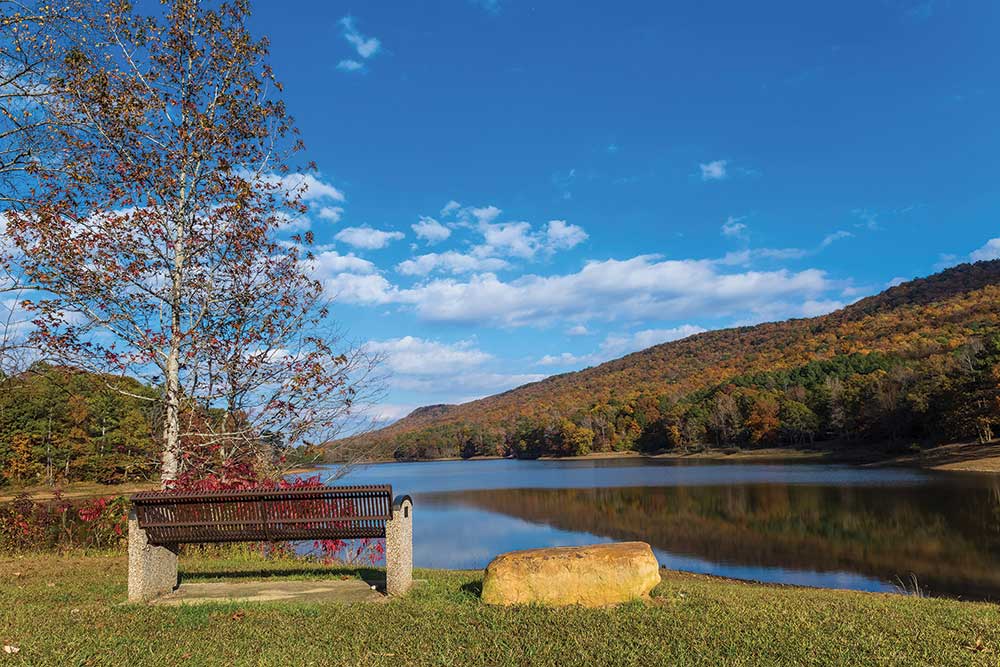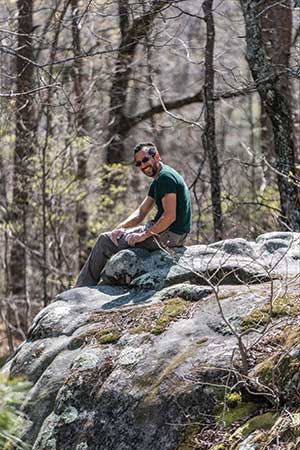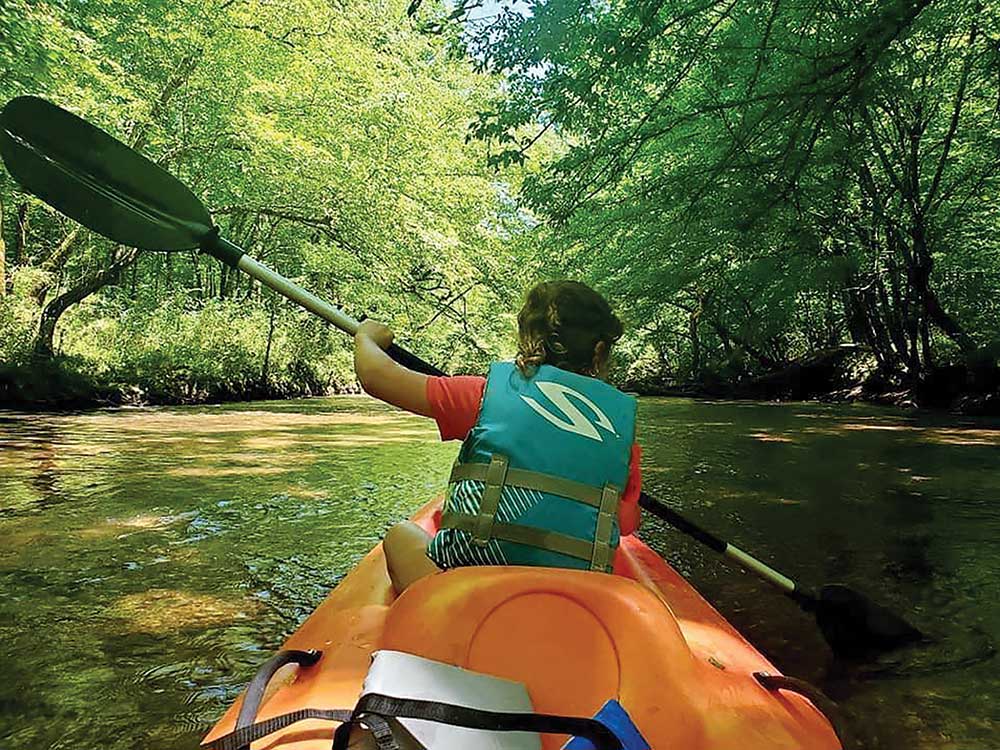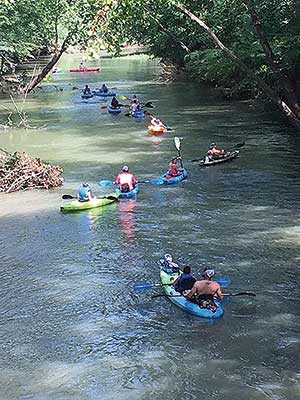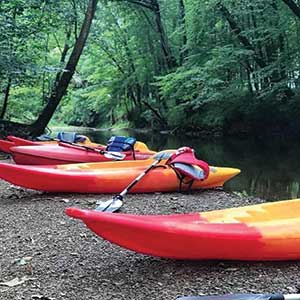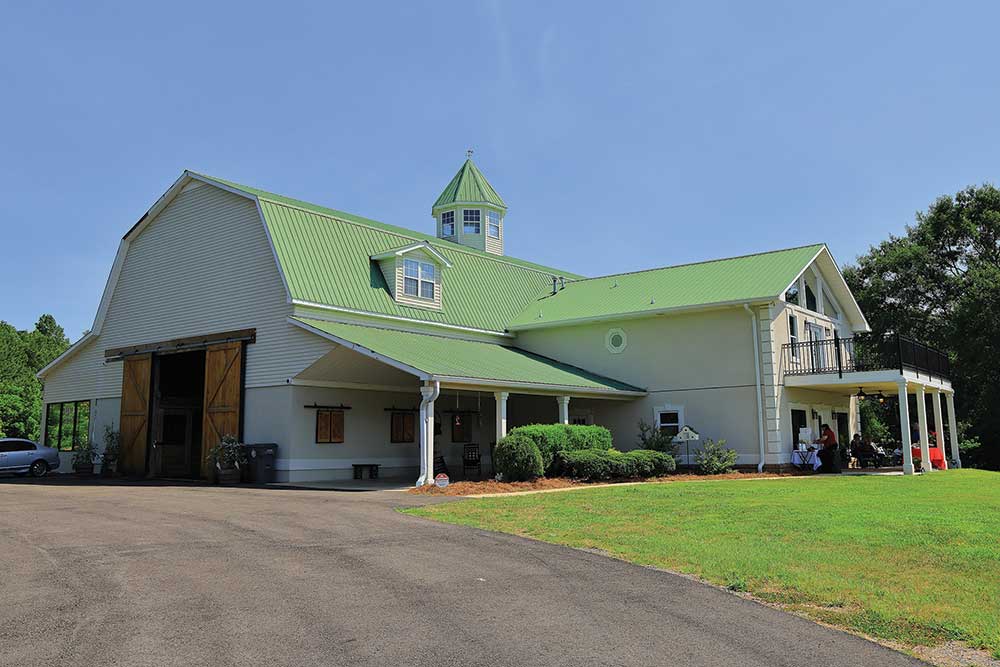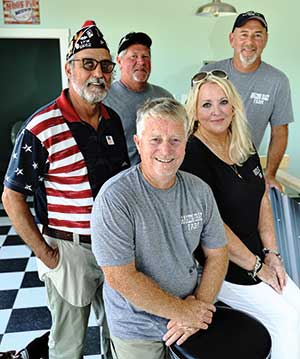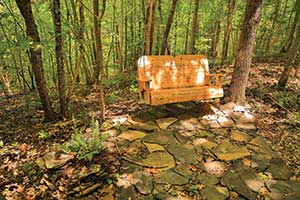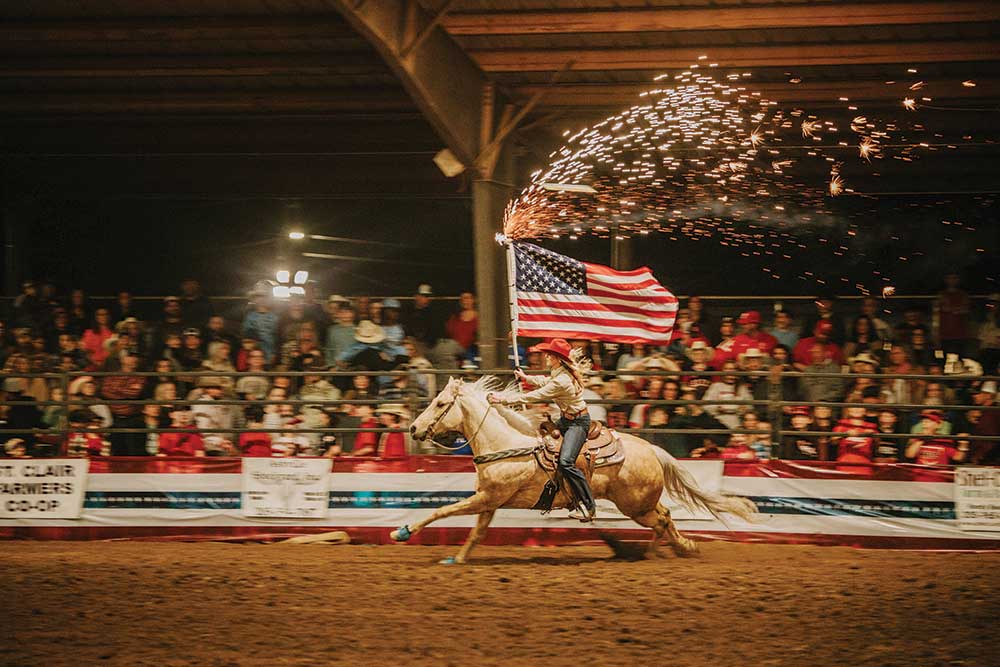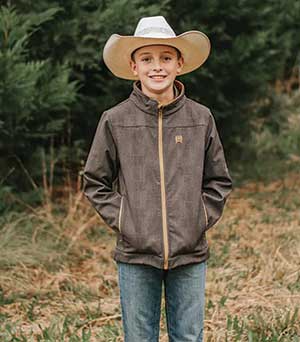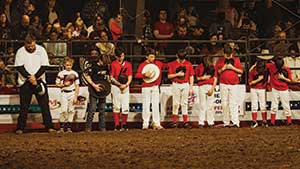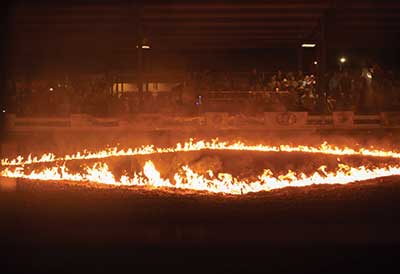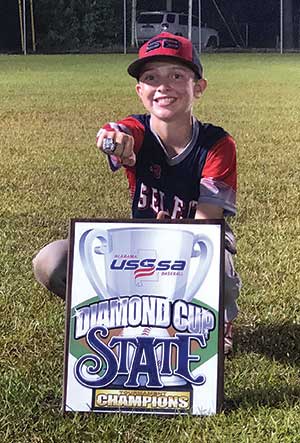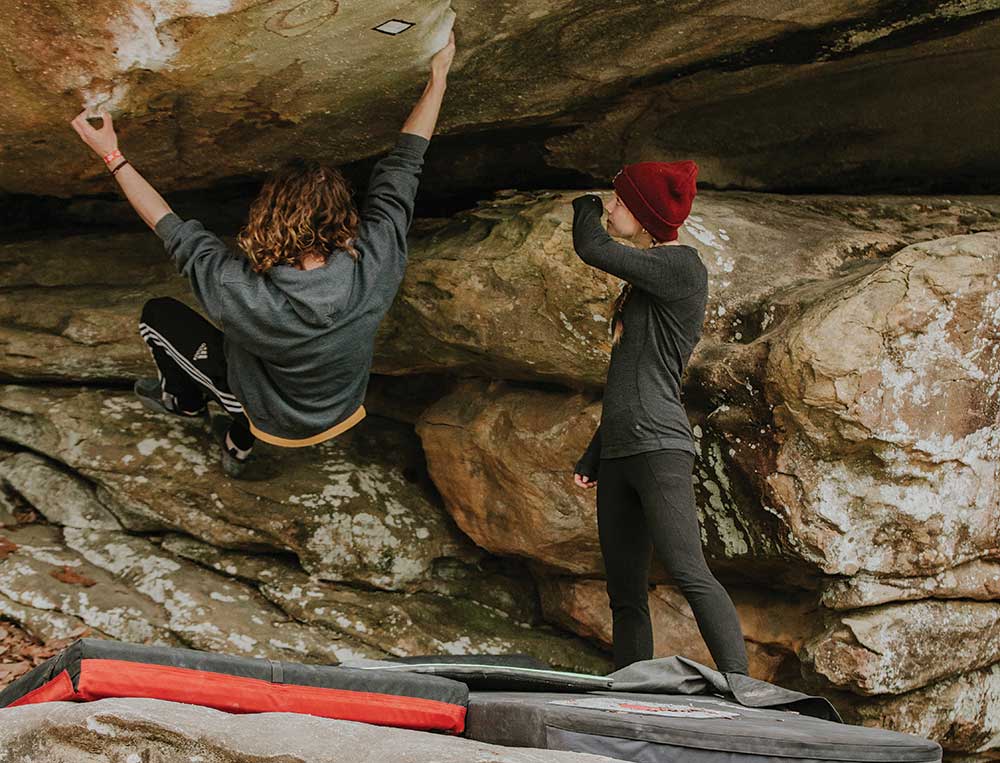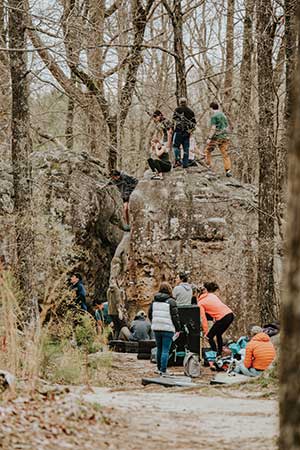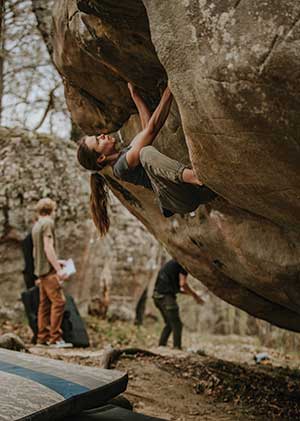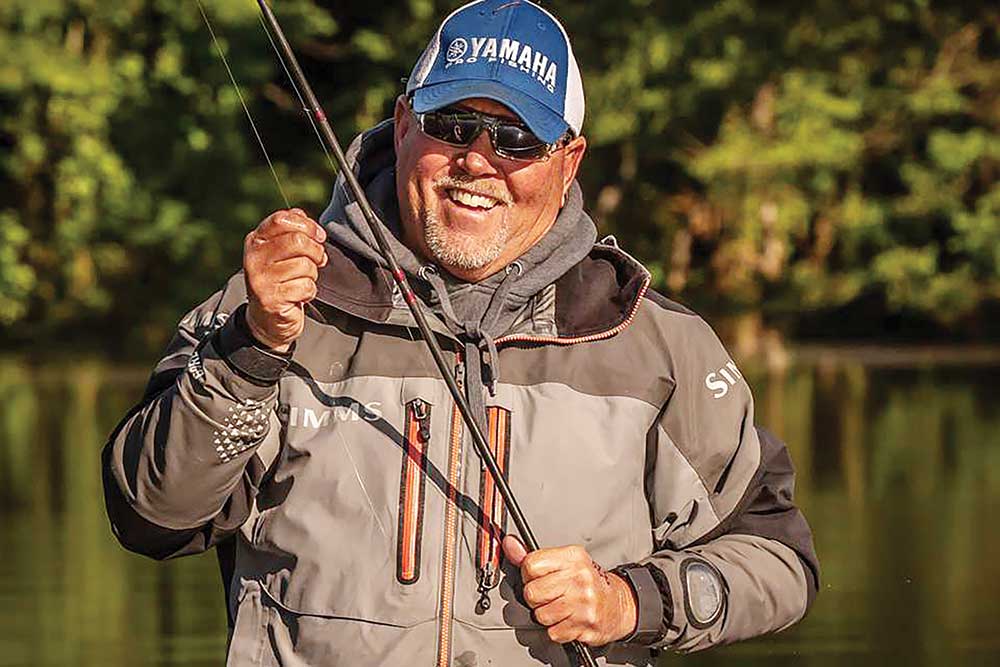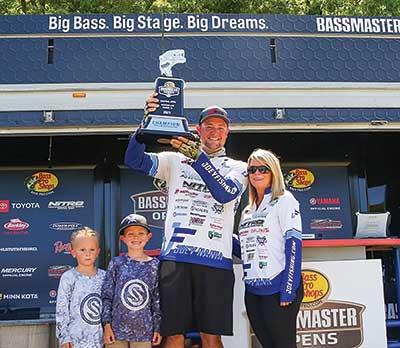Sport finds new home in Pell City
Story by Scottie Vickery
Submitted and archive Photos
When the day-to-day demands begin to get overwhelming, Urainah Glidewell knows it’s time for a little outdoor therapy. That’s when she laces up her hiking boots and heads for the woods in search of the road – or trail – less traveled and the joy she finds out in nature.
“Hiking is one of my favorite things to do,” she said. “Getting away from technology and the stresses of life is very peaceful and calming. It really helps to clear your mind. We focus on the things around us, and when the things around us are calming, you feel more calm within.”
Glidewell doesn’t have to go far to find the peace she craves. St. Clair County, nestled at the foot of the Appalachian Mountains, has an ever-growing list of beautiful options for getting away from it all. And fall, with its cooler temps and breathtaking colors, is the perfect time to plan an escape.
It’s one of Josh Reyes’ favorite times to head to one of his preferred places, Horse Pens 40, an historic park at the top of Chandler Mountain in Steele featuring ancient rock formations. Although Reyes, an avid boulderer, goes for the climbing, he usually can’t resist heading to the end of the trail that overlooks the valley. “It makes for some gorgeous sunsets,” he said. “It’s a beautiful view you don’t have to work hard to get to.”
Enjoying the beauty that St. Clair County has to offer is the main draw for Glidewell. “For me, it’s being out in nature, enjoying the flora and fauna and seeing If I can spot any animals,” she said. “I’m not as focused on how many steps I’ve taken. Pretty soon, I’ve hiked five miles, and it doesn’t feel like it. Five miles on a treadmill feels a lot different.”
Regardless of whether you have time for just a quick trek or a full day to explore, finding a change of scenery and mindset is as easy as putting one foot in front of the other. So, when you’re ready to hit the trails, here are some places to start:
Camp Sumatanga
Sumatanga Camp and Conference Center, founded as a United Methodist camping ministry in Gallant, offers a one-mile Mountain Trail that ends at Creel Chapel at the top of Chandler Mountain. There is also the paved Rosenau Lake Trail that begins at Pool Camp, the historic center of the facility that includes eight original cabins and winds around Lake Sumatanga.
The trails are open to the public from August to May but are reserved for campers during June and July, according to Camp Sumatanga’s Leslie McClendon. Visitors are asked to check in at the lodge, where trail maps are available, so the staff can know who is on the property. Dogs must be leashed, and no one is allowed on the trails at night.
“Sumatanga” is the Himalayan word for a place of rest and vision, and that’s exactly what hikers can expect to find. Although considered a more moderate hike, the Mountain Trail is the most popular because of the beautiful view from the chapel. “It’s just you, nature and God,” McClendon said. “We always say that if you can’t find God at Sumatanga, you can’t find God.”
For information and directions, visit www.sumatanga.org.
Double Cove Park
Part of The Preserves, Alabama Power’s public-use properties, Double Cove Park was previously known as Logan Martin Dam Park. The day-use park, open from daylight to dusk, features a beach and swimming area, two fishing piers, grills, picnic tables, restrooms, and pavilions, as well as a view of Logan Martin dam. The park also boasts a playground and several trails ranging from just over a mile to just under two miles. Although leashed dogs are allowed on the trails, they are not allowed at the park.
“This, for me, is a hidden gem,” Glidewell said. “They have some absolutely beautiful trails going back through the woods with some wonderful benches and gazebos tucked away.”
Alabama Power offers more than 70 public-use properties around 12 reservoirs on the Coosa, Tallapoosa and Black Warrior rivers. Some are boat launches or picnic spots while others, like Double Cove, have a number of amenities.
“We have some wonderful recreation sites, and they’re all free for everyone’s use,” said Josh Yerby, a team leader for Alabama Power’s Shoreline Recreation.
For more information and directions, visit www.apcpreserves.com.
Horse Pens 40
Horse Pens 40, with what Reyes calls its “corridors of beautifully sculpted sandstone formations,” is well known and respected in climbing circles and is one of three sites in the Triple Crown Bouldering Series.
“We have a lot more people from out of state than in-state come visit,” said Ashley Ensign, a member of the Schultz family that operates the park. “We have people who come out and stay for an hour or come and stay all day. There’s lots to explore.”
The park is home to 60 rare, threatened, protected or endangered species, and Ensign said it’s like an undeveloped Rock City. “There’s no concrete pathway, nothing is paved,” she said. Instead, the trails wind around the ancient boulder field, ending at the overlook that Reyes and others have come to love. “It’s a beautiful place with absolutely beautiful trails and a lot of history,” Glidewell said.
Billed by the family as “the South’s best kept secret,” Horse Pens 40 was occupied by Native Americans, including the Creeks and Cherokees. “The first humans to see the mountain would have considered it a huge fortress that could provide them protection, shelter, food and water throughout the year,” according to the website.
The boulders form a natural corral, and “it’s called Horse Pens 40 because the Native Americans chased wild horses and herded them up so they could break them and tame them,” said Reyes. He lives in Jacksonville but has become something of an expert about the park he’s been visiting for 20 years, usually two or three times a month. “It reminds us that we weren’t the first ones here.”
In addition to trails and boulders, the park, open from 8 a.m. to 6 p.m., offers primitive camping, RV hookups, eight cabins, picnic areas and a playground. No dogs are allowed in the park, and the day use fee is $10 per person. Children under 10 are admitted free.
For information and directions, visit www.hp40com.
Lakeside Park
If you want proof that getting away from it all doesn’t mean you have to go far, look no further than Lakeside Park in Pell City. Next to the Civic Center on Stemley Bridge Road, the park is built on 65 acres and is a beautiful oasis bordering Logan Martin Lake.
“If you have a quick 15 or 30 minutes and want a nice place to get out and experience some beautiful nature and get some exercise, it’s a great place to do it,” Glidewell said. “If people are just starting out it’s an easy trial. The walking track goes along the lake and there’s a trail through the woods as well.”
The Native Plant Walking Trail, a project of the Pell City Garden Club that spans two acres, is only one draw of the park, where many people go to spend the day.
Along the way, discover Wetlands Boardwalk Project, an effort by Logan Martin Lake Protection Association to preserve Logan Martin’s wetlands area and to raise awareness about the critical role wetlands plays in the environment and to educate youths on its importance.
A hand-built, 70-foot walkway guides you into the natural wetlands, and a 40-by-12-foot observation platform allows you to take in the scenery and sounds of nature. Signs from the platform identify the plants seen from the boardwalk and observation deck.
But the walking trail doesn’t end there, it also winds around the park, which features a beach and swimming area, boat launch, restrooms, picnic tables, pavilions, fishing piers and an amphitheater available for rent, and a newly rebuilt Kids Kastle playground that is a hit with kids of all ages. During the summer months, the Splash Pad is a popular destination.
The park is open from 6:30 a.m. to sunset. Dogs are allowed but must be on leashes. For more information, visit www.pell-city.com/lakeside-park.
Ten Islands
Another of The Preserves’ offerings, Ten Island Historic Park in Ragland, has a long and storied past. Some speculate that the Spanish explorer Hernando de Soto, crossed the river at this point in the 1540s, according to Alabama Power’s website for the Preserves.
The indigenous Creek first named the site of this park “Oti Palin,” which means Ten Islands, after a series of small islands along the Coosa River, the majority of which no longer exists. The Creeks settled on the largest island, Wood Island, which was later used when Neely Henry Dam was constructed.
Today, the park, which is open from 5 a.m. to 9 p.m. and is part of the Alabama Birding Trails, is considered one of the best public spots for bird watching. Ten Islands offers a boat launch, beach and swimming area, restrooms, multiple picnic pavilions and tables, two fishing piers and gazebos. And although the trails, which total nearly two miles, have long been a big draw, the opportunity to travel through the woods has been opened up to even more people.
“We’ve cut another trail into the woods with ADA (Americans with Disabilities Act) compliant slopes,” Yerby said of the project that was scheduled to be in September. “It runs alongside the other trail and connects them at certain points, so it will add about another ¾ of a mile.”
The new trail will give those who use wheelchairs “the experience of being in a truly wooded area on a nature trail,” he said. “We have projects like this going on all over the state.”
Dogs on leashes are allowed on the trails, but not in the park area. For information and directions, visit www.apcpreserves.com.
Coming Soon
Big Canoe Creek Nature Preserve, a 422-acre Forever Wild property, will soon offer even more options for hiking in St. Clair County. The groundbreaking for the project was held in March, and plans call for a series of trails that will eventually cross the preserve.
For more information, visit springvilleparksandrec.com or bigcanoecreekpreserve.org.











